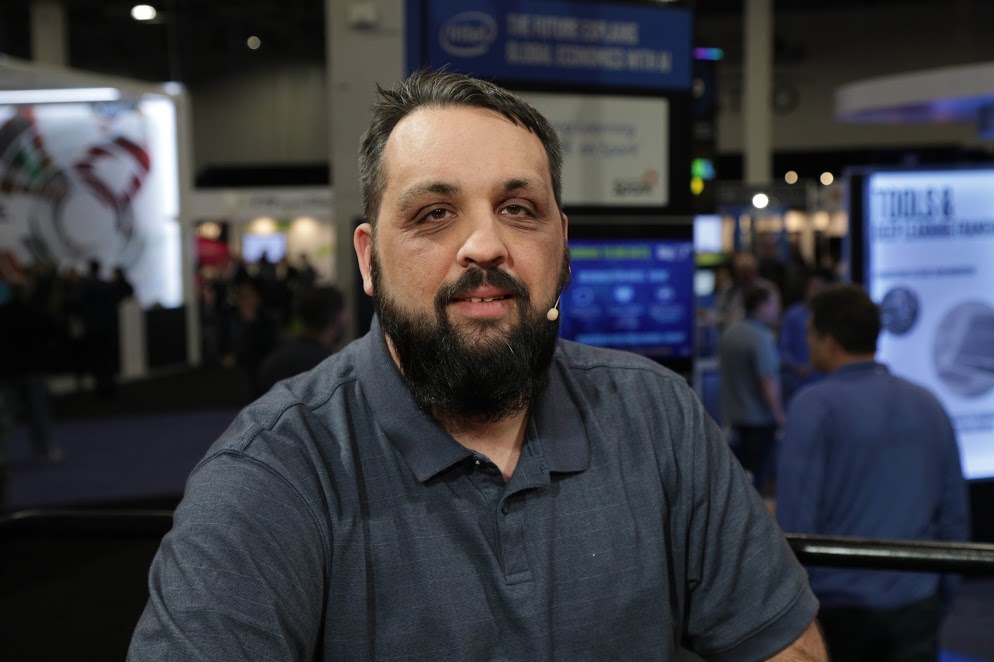 CLOUD
CLOUD
 CLOUD
CLOUD
 CLOUD
CLOUD
Early last year, a man walked into a hardware store in Oregon, picked up a basket, and began placing a number of expensive items into it. At first glance, that alone would not have been enough to raise suspicion. However, before finishing the purchase process at a self-service kiosk, the man picked up his items and abruptly left the store.
Fortunately for the retailer, the checkout kiosk had a camera that captured a photo of the thief. Unfortunately for the thief, the Washington County Sheriff’s Office assigned to investigate the case had recently implemented a facial recognition system that was able to match the kiosk photo with a database containing more than 300,000 images.
Using Amazon Rekognition, the Sheriff’s Office was able to narrow the suspect to four potential possibilities, which rapidly became one suspect when a detective searched on Facebook and found the suspect with the same facial features and wearing the same hoodie. Case closed.
That a hardware store thief could be identified and apprehended so quickly represents a growing trend among law enforcement groups that are taking full advantage of new cloud-based tools and technologies.
“Now I can use the simple tools that Amazon Web Services gives me to search against that index for any new image that we get in, either from surveillance or an eyewitness,” said Chris Adzima (pictured), senior information systems analyst at the Washington County Sheriff’s Office. “It allows us to get identification within seconds as opposed to having to go through all 700 employees at the Sheriff’s Office on the chance that they might have known the person.”
Adzima visited the set of theCUBE, SiliconANGLE Media’s mobile livestreaming studio, and spoke with host John Furrier (@furrier) and guest host Justin Warren (@jpwarren) during the AWS re:Invent conference in Las Vegas, Nevada. They discussed the process used to create a searchable database, AWS tools and new technologies that are being adopted by law enforcement, and the cost advantages associated with cloud-run systems. (* Disclosure below.)
This week theCUBE features Chris Adzima as our Guest of the Week.
The power to identify suspects from known images is not without limits. In the case of the hardware thief, he was quickly spotted only because Adzima and his team had loaded 10 years of booking photos into a database, following law enforcement wisdom that once someone commits a crime, the likelihood is high they’ll commit one again.
“I can identify people with a high level of certainty if they’ve been in our jail,” Adzima said. “When you have the data, it’s very simple.”
Since Rekognition was initially released in 2016, Amazon has made additional enhancements to the technology. There is now capability to detect and extract objects and faces from moving images as well following the announcement of Rekognition Video in November.
The ability to bring scalable computer vision analysis to video is an important step forward, not just for recognizing moving images but understanding context as well. With Rekognition Video’s deep learning tools, users can not only confirm objects such as a man and a car, but also whether the man was running toward the car.
“When you have a surveillance camera, people are moving all the time, therefore getting a screen shot is going to give you a blurry image,” Adzima explained. “Rekognition for video is going to be able to take that movement and hopefully still be able to look at the face.”
The introduction of DeepLens by AWS is another tech area of interest for law enforcement. DeepLens is a $250 artificial intelligence-powered camera unveiled in November at re:Invent. Pre-installed AI tools include image and object recognition.
This kind of technology could prove useful to law enforcement agencies like the Washington County Sheriff’s Office because it’s common practice now to photograph not only a suspect’s face, but also any identifying body marks, such as scars or tattoos when they are booked.
“That looks extremely promising in terms of me being able to teach it things that we need,” Adzima said. “With [DeepLens], we wouldn’t even need a picture. We would just need to know from an eyewitness that there was a skull on that person’s chest.”
With the improvement in technology comes another attractive benefit for law enforcement agencies: lower costs. The enhancements offered by AWS are essentially ready-out-of-the-box intelligent solutions that don’t require the hiring of a data scientist or the purchase of expensive processing technology to use them.
Oregon’s Washington County authorities are finding that the return on investment can be significant. It costs the Sheriffs’ department $6 per month to use AWS services, according to Adzima. That translates into a remarkable bargain for a database of images that can help solve multiple crimes.
“That’s extremely easy to sell to taxpayers,” Adzima concluded.
Watch the complete video interview below, and be sure to check out more of SiliconANGLE’s and theCUBE’s coverage of AWS re:Invent. (* Disclosure: Amazon Web Services Inc. sponsored this segment of theCUBE. Neither AWS nor other sponsors have editorial control over content on theCUBE or SiliconANGLE.)
THANK YOU